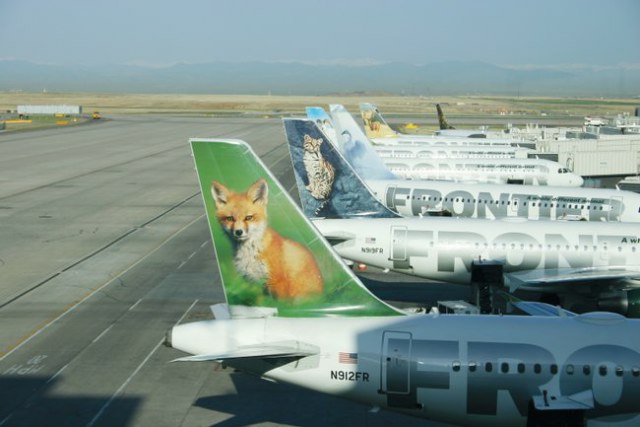As we roll toward the runway in preparation for takeoff, I catch sight of two red foxes. The pair is skirting the taxiway in the tall brush, probably headed for the nearest hole joining their home to their hunting grounds around the Bozeman airport property. My finger instinctively quivers on the mic button wanting to alert the control tower of the intruders. General protocol is to report all wildlife activity so pilots can avoid potential collision hazards. When deer or seagulls encroach a runway environment, ground personnel traditionally go careening out in their flashing airport security vehicles to either blast a warning 'bird-banger' or attempt to remove the disruption.
The foxes weave in and out of the dry grass beside me, acutely aware of their surroundings. I slide my hand down my joystick away from the mic button. Do they live right here in a metal culvert den beneath the tarmac? Did their ancestors reside in this nook of the Gallatin Valley long before the airport arrived? If so, their homeland was torn up and leveled to accommodate "a whole different animal..."—as the slogan announces on the Frontier Embraer E190 jet that touches down in front of me. The airliner proudly sports an enormous tail section decal of—no joke—a red fox pup peaking out of some ferns.
The jet clears the runway and my flight student taxis our Diamond DA-20 onto the center line. She advances the throttle to full and we roar into the sky. Shrinking behind us is the several-square-mile patch of airport outlined by a 10 foot high fence implemented by the Department of Homeland Security. Oddly these grounds have become a new form of sanctuary: a vast space of protected open prairie and ponds where creatures find refuge from the urban sprawl, albeit the space is still defined by concrete and occasional deafening engines. The airport perimeter patrol guards take on the role of postmodern zookeepers, trying to stay in control of the wildlife in order to allow our own wild lives to flow uninterrupted.
Now at altitude, my student runs through her checklist and reduces the throttle. She rolls the plane north toward the Bridger mountains and we glimpse a golden eagle bank sharply to avoid us. The bird appears to be en route toward the approach end of the runway, an ideal area to prey on field rodents. The dichotomy of animal scenes fascinates me; when I obstruct a raptor’s flight path, is it similar to a fox beating the bird to a scurrying mouse? Or am I a whole different animal?

James Schaberg is a Gold Seal flight instructor currently living in Bellingham, Washington.






